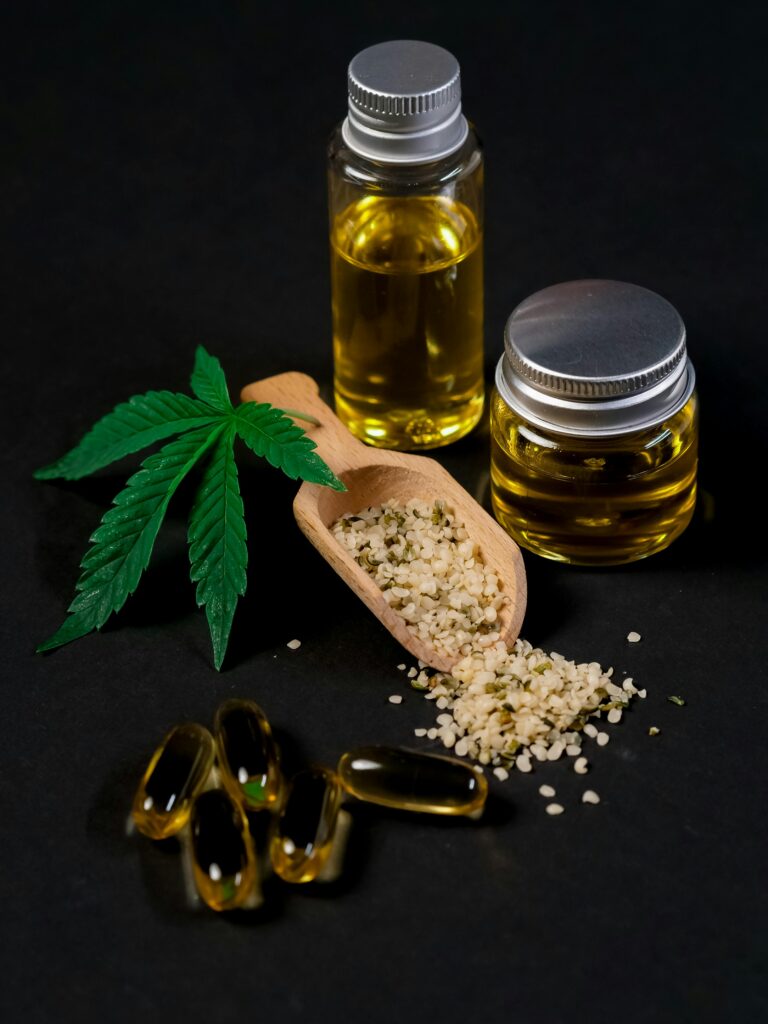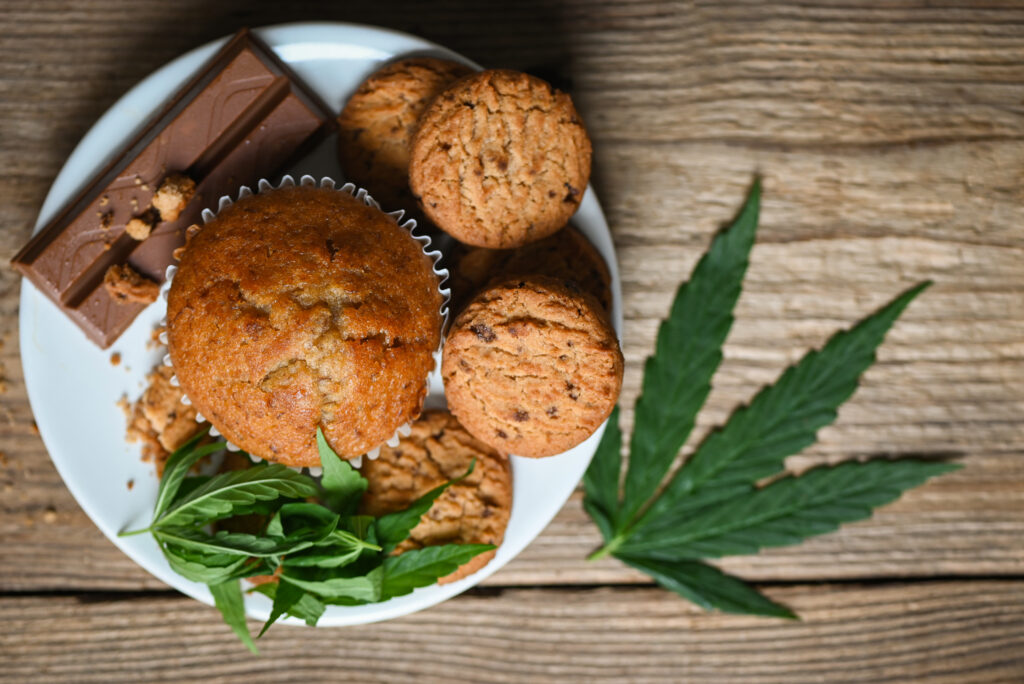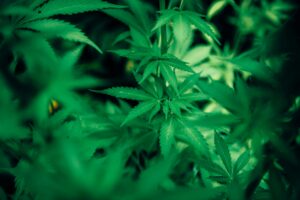In Mississauga, Ontario, many are curious about edible dosage but aren’t sure where to start. You’re not alone. Figuring out the right amount of cannabis edibles, often called weed edibles, can feel like a bit of a guessing game initially.
But don’t worry – we’ve got you covered with this beginner’s guide to edible dosage. Understanding the correct edible dosage is important for a positive cannabis experience.
Whether you’re new to cannabis or just switching from other consumption methods to edibles, understanding dosage is fundamental to having a good time. We’ll walk you through everything you need to know to find your perfect dose.
What Are Cannabis Edibles?
Before we discuss edible dosage, let’s cover the basics. Cannabis edibles are food products infused with cannabis extracts like cannabis oil or cannabis concentrates. They come in a wide variety of forms – gummies, chocolates, baked goods, drinks, mints, capsules, and more.
Edibles offer a smoke-free way to consume cannabis, which many people prefer. They’re discreet and provide long-lasting effects compared to inhalation methods. However, their mechanism of action is different, making proper dosing edibles crucial.
Choosing edibles can depend on personal preference for flavor, form, and desired onset time. The range of products means there’s likely an option suitable for most cannabis users.
How Edibles Affect Your Body
When you eat cannabis, it takes a different path through your body compared to smoking or vaping. This biological journey significantly impacts how quickly you feel the effects and how long the edible high lasts. Understanding this process helps clarify why edible dosage requires careful consideration.
Unlike inhaled cannabis, which enters the bloodstream quickly through the lungs, ingested THC travels first to your stomach and then to your liver. In the liver, a significant portion of the THC undergoes first-pass metabolism. Here, it’s converted into a more potent compound called 11-hydroxy-THC.
This potent metabolite is largely responsible for the intense experience often associated with edibles, even at what might seem like a comparable THC dosage to inhaled products. It readily crosses the blood-brain barrier, leading to strong psychoactive effects. Because of this metabolic process, the edible THC effects take longer to manifest, usually between 30 minutes and 2 hours, but sometimes longer, depending on various factors.
Consequently, the effects typically last much longer than other consumption methods, often ranging from 4 to 8 hours and occasionally even longer for some individuals or with a high dose. This extended duration is a key reason why starting with a low edible dose and waiting patiently is so important. Jumping to a higher dose too quickly can lead to an uncomfortably long and super-high feeling.
Finding Your Ideal Edible Dosage
Now for the central question: how much thc edibles should you take? There isn’t a single answer that fits everyone. The perfect dose for an enjoyable cannabis experience depends heavily on individual factors that affect your reaction, including your cannabis tolerance, body chemistry, metabolism, and the specific product you choose.
However, we can offer a general guideline and starting point. The most common advice from experienced cannabis users is to start low and go slow. This approach helps you minimize potential adverse effects and discover your personal edibles limit comfortably.
You should gradually increase your dose only after understanding how a lower dose affects you. Keeping a log of the product, dose, timing, and effects can help you find the perfect balance. Remember, the goal is to achieve the desired effects safely.
Edible Dosage Chart: A General Guideline
Here is a basic edible dosage chart to help visualize starting points. Keep in mind that this is a general guideline, and individual results can vary significantly. Always check the product label for specific dosage information per serving.
Dosage Range (mg THC) | Typical User | Potential Effects | Notes |
1 – 2.5 mg | Beginners, Microdosers, Highly Sensitive | Mild relief of symptoms like pain, stress, anxiety; increased focus/creativity. Usually non-intoxicating. | Good starting dose for those new to cannabis or prone to anxiety. |
2.5 – 5 mg | Casual Consumers, Beginners | Stronger symptom relief; mild euphoria; slight impairment possible. A good dosage for many first-timers. | Standard starting dose recommended by many dispensaries. Wait at least 2 hours before considering more. |
5 – 10 mg | Regular Users, Beginners seeking stronger effects | Noticeable euphoria; moderate symptom relief; impaired coordination and altered perception likely. | Effective dose for many recreational and medical cannabis users. |
10 – 20 mg | Experienced Cannabis Users | Strong euphoria; significant impairment in coordination and perception; substantial symptom relief. Potential for a strong high feel. | Can cause discomfort or anxiety in inexperienced users. |
20 – 30 mg | Users with High Tolerance | Very strong euphoria; likely significant impairment; possible adverse effects like rapid heart rate or anxiety. | Only recommended for experienced users with established high tolerance. |
30 – 50 mg | Experienced Users with Very High Tolerance, Some Medical Patients | Intense euphoria; major impairment; increased likelihood of adverse effects, possibly leading to an intense experience. | Approach with extreme caution. High potential for unwanted psychoactive effects. |
50+ mg | Users with Extremely High Tolerance, Specific Medical Needs | Very intense effects; severe impairment; high probability of unpleasant side effects for most users. | Generally reserved for specific medical cannabis cases or individuals with exceptionally high thc tolerance, under guidance if possible. |
Remember, this dosing chart provides estimated effects. Factors like the type of edible cannabis product and individual biology mean your experience might differ. Patience is key when determining your ideal edibles dosage.
Tips for Safe Edible Dosing
Following best practices can help you have a positive and enjoyable experience with cannabis-infused edibles. Responsible consumption is fundamental, especially when dealing with the delayed onset and long duration of edibles effects. Here are some tips:
- Start with a low dose, typically 1-5 mg of THC, especially if you are new or trying a new product. It’s good to be cautious.
- Wait at least 90 minutes to 2 hours after consuming an edible before considering taking more. Effects can take time to peak.
- Avoid mixing edibles with alcohol or other substances. Combining substances can increase impairment and potential health risks.
- Keep some CBD-only products (like cbd edibles or tinctures) on hand. CBD may help counteract some of the unwanted psychoactive effects of THC if you feel too high.
- Stay hydrated by drinking plenty of water. Having non-medicated snacks readily available can also be helpful.
- Ensure your schedule is clear for several hours after consumption. The effects typically last 4-8 hours or more, so don’t plan activities requiring focus or coordination.
- Never drive or operate heavy machinery after consuming cannabis edibles. Impairment can be significant and long-lasting.
- Consume edibles in a safe, comfortable, and familiar environment, especially when trying them for the first time or experimenting with a higher dosage edible.
- Store edibles securely and out of reach of children and pets. Many edibles look like regular treats.
By following these tips, you can minimize potential risks and increase your chances of having the desired experience. Safety should always be a priority when dosing edibles.
Factors That Affect Your Edible Experience
Your edible journey and the effects people feel aren’t solely determined by the THC dosage listed on the package. Several biological and situational factors affect how your body processes edible THC, influencing the onset, intensity, and duration of the experience. Understanding these can help you manage your consumption more effectively.
Cannabis Tolerance
Regular cannabis users develop tolerance, meaning they need higher doses over time to achieve the same desired effects. If you consume cannabis frequently, your THC tolerance will likely be higher than someone new to cannabis. Conversely, taking breaks from cannabis can lower your tolerance.
Body Weight and Composition
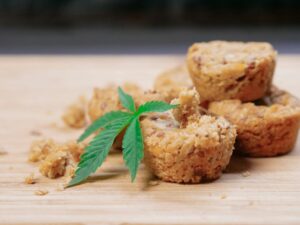 While there is no direct correlation, body weight and body fat percentage can play a role. THC is lipophilic (fat-soluble), meaning it can be stored in fat cells. Body composition might influence how THC is distributed and metabolized, potentially affecting the duration or intensity, but the relationship is complex and varies individually.
While there is no direct correlation, body weight and body fat percentage can play a role. THC is lipophilic (fat-soluble), meaning it can be stored in fat cells. Body composition might influence how THC is distributed and metabolized, potentially affecting the duration or intensity, but the relationship is complex and varies individually.
Metabolism
Your individual metabolic rate, particularly liver enzyme function (like the CYP450 enzymes responsible for breaking down THC), significantly impacts how quickly you process edibles. A faster metabolism might lead to a quicker onset but potentially shorter duration, while a slower metabolism could mean a delayed onset and longer-lasting effects. This metabolic difference is a major reason why cannabis experiences vary so much.
Empty vs. Full Stomach
Consuming edibles on an empty stomach generally leads to a faster onset and potentially more intense effects, as the THC is absorbed more rapidly. Taking edibles after a meal, especially a fatty one, can slow down absorption, leading to a more gradual onset and sometimes slightly moderated peak effects, though fatty foods can sometimes enhance overall absorption.
Product Type and Formulation
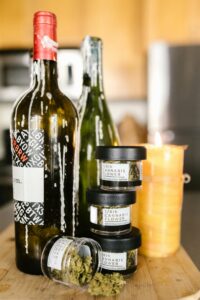 The type of edible itself matters. Gummies, chocolates, baked goods, beverages, tinctures, and capsules can all have slightly different absorption pathways and ingredients that influence onset time and overall effects. For instance, beverages or tinctures might be absorbed slightly faster, partially through oral membranes, compared to denser baked goods, which rely entirely on digestion.
The type of edible itself matters. Gummies, chocolates, baked goods, beverages, tinctures, and capsules can all have slightly different absorption pathways and ingredients that influence onset time and overall effects. For instance, beverages or tinctures might be absorbed slightly faster, partially through oral membranes, compared to denser baked goods, which rely entirely on digestion.
Even product-based factors like the specific cannabis concentrates used for infusion can make a difference. Full-spectrum extracts containing various cannabinoids and terpenes might produce different effects than edibles made with THC distillate alone due to the entourage effect. Consistency can vary between brands and even batches.
Types of Cannabis Edibles
The market offers a wide variety of cannabis edibles, catering to different tastes and preferences. Understanding the common types can help you choose edibles that align with your needs and expectations regarding flavor, ingredients, and potential onset times.
- Gummies: Often considered a starting point for beginners, gummies are popular due to their controlled dosage, pleasant taste, and portability. They rely on digestive absorption.
- Chocolates: Another popular choice, chocolate bars or bonbons offer easy dosing as they are often scored into sections. The fat content in chocolate may potentially aid THC absorption.
- Baked Goods: Brownies, cookies, and other baked goods were some of the original forms of edibles. Dosing can sometimes be less precise unless commercially produced and clearly labeled per serving.
- Beverages: Cannabis-infused sodas, teas, coffees, and tonics are increasingly common. Some use nanoemulsion technology for potentially faster absorption and onset compared to solid edibles.
- Tinctures & Oils: Technically consumed orally, cannabis oil or tinctures are often dropped under the tongue (sublingually). This allows for some absorption directly into the bloodstream via oral membranes, potentially leading to a faster onset than fully digested edibles.
- Capsules & Softgels: These offer a flavorless, precisely dosed option similar to traditional supplements. They rely entirely on digestive absorption.
- Mints & Hard Candies: These dissolve slowly in the mouth, allowing for some sublingual absorption similar to tinctures, which might lead to a slightly quicker onset of effects for some people.
While all rely on eventual digestion and liver metabolism, the initial absorption pathway (mouth vs. stomach) and accompanying ingredients can subtly influence the timing of the cannabis experience. Always check the label for the recommended activation time for any specific product.
Understanding THC vs. CBD in Edibles
Not all cannabis compounds produce the same effects. The two most well-known cannabinoids are THC (Tetrahydrocannabinol) and CBD (Cannabidiol), and their presence and ratio in an edible significantly shape the experience.
THC is the primary psychoactive component in cannabis, responsible for the euphoric high feel associated with consumption. It interacts mainly with CB1 receptors in the brain and nervous system. Edibles containing primarily THC will produce these characteristic effects.
CBD, conversely, is non-intoxicating, meaning it doesn’t produce a high. It interacts differently with the body’s endocannabinoid system and has been studied for various potential therapeutic benefits, including reducing anxiety, inflammation, and seizures. Many people choose CBD edibles specifically for these potential benefits without the high.
Some edibles contain a combination of both THC and CBD. CBD is known to modulate the effects of THC, potentially lessening the anxiety or paranoia that some people experience with high THC doses. Products with balanced ratios like 1:1 THC to CBD are popular among those seeking milder high or specific therapeutic outcomes, offering a different kind of enjoyable cannabis experience.
Beyond THC and CBD, some edibles may also contain other cannabinoids like CBN (potentially promoting relaxation or sleep) or CBG (studied for anti-inflammatory properties), contributing to the overall effects through the entourage effect. Reading the label carefully to understand the cannabinoid profile is important for selecting the right product for your desired effects.
Edible Dosage for Medical Use
When using cannabis edibles for medical purposes, the approach to dosing can differ significantly from recreational use. Finding the right medical cannabis dose often involves targeting specific symptoms while minimizing unwanted psychoactive effects, requiring a careful and sometimes systematic approach.
It is highly recommended to consult with a healthcare provider knowledgeable about cannabis medicine. They can provide guidance based on your specific condition, medical history, other medications, and treatment goals. Self-treating with high doses without guidance carries potential health risks.
Medical cannabis users may sometimes require higher doses of THC or specific cannabinoid ratios (e.g., higher CBD) compared to recreational users to manage severe symptoms like chronic pain, muscle spasms, or chemotherapy-induced nausea. Consistency is often crucial for medical use, making precisely dosed products like capsules or tinctures popular choices. Careful tracking of dosage and symptom relief is essential to find the most effective regimen.
Microdosing can also be a viable strategy for medical cannabis patients seeking symptom management without significant impairment during the day. Again, professional medical advice is the best starting point for using edible cannabis therapeutically.
Microdosing with Edibles
Microdosing involves taking very small, sub-perceptual doses of cannabis edibles regularly. The goal isn’t to get high but to achieve subtle therapeutic benefits or enhancements without noticeable intoxication or impairment. This approach is popular among individuals seeking mild symptom relief or cognitive benefits during their daily routine.
A typical microdose ranges from 1 mg to 2.5 mg of THC, sometimes combined with CBD. Potential effects people seek from microdosing include reduced anxiety or stress, improved mood, increased focus or creativity, and mild pain relief. Because the dose is so low, the psychoactive effects are minimal to non-existent for most users.
Microdosing requires consistency and careful observation. Keeping a journal to track dosage, timing, and perceived effects can help determine if it’s providing benefits. It’s a way to potentially harness some cannabis benefits without interfering with daily activities, making it a suitable starting point for those highly sensitive to THC or new to cannabis entirely.
Reading Edible Labels
Understanding how to read product labels is essential for safe and effective edible dosage. Reputable and legal cannabis markets have labeling requirements designed to inform consumers about potency and ingredients. Here’s what to typically look for:
- Total THC/CBD Content: This number (usually in milligrams, mg) indicates the total amount of THC and/or CBD in the entire package.
- THC/CBD Per Serving: This is the most critical number for dosing edibles. It tells you how many milligrams of THC and/or CBD are in a single recommended serving (e.g., one gummy, one square of chocolate).
- Number of Servings: The label should state how many servings are in the package. Always use this information to calculate your dose accurately. For example, a package with 100mg total THC and 10 servings means each serving contains 10mg THC.
- Activation Time: Some labels provide an estimated onset time, which can range from 30 minutes to 2+ hours.
- Ingredients List: Check for potential allergens or dietary restrictions.
- Other Cannabinoids/Terpenes: Some labels list other active compounds that can influence the overall effects.
- Batch Number/Testing Info: This allows for traceability and verification of lab testing results, ensuring product consistency and safety.
Always double-check the THC per serving before consuming. A common mistake is confusing the total package content with the content per serving, which can lead to accidental high-dose consumption. Pay close attention to the math.
Potential Side Effects of Edibles
While often sought for their positive effects, cannabis edibles can sometimes cause unwanted side effects, especially with improper edible dosage or individual sensitivity. Being aware of these potential effects can help you prepare and manage your experience. Most side effects are temporary and related to the dose consumed.
Common side effects include dry mouth (cottonmouth) and red eyes. Staying hydrated can help manage dry mouth. Over-the-counter eye drops can alleviate redness if needed.
Higher doses, particularly for inexperienced cannabis users or those sensitive to THC, can lead to more significant adverse effects. These may include dizziness, lightheadedness, increased heart rate, anxiety, paranoia, or feeling disoriented. In some cases, people might experience mild coordination problems or short-term memory impairment.
Nausea or vomiting can occur, although ironically, cannabis is sometimes used to treat these symptoms at lower doses. An intense experience from a high dose can be psychologically uncomfortable. Starting with a low dose and waiting patiently for effects is the best way to minimize potential side effects and avoid feeling super high unexpectedly.
Ready to Find Your Ideal Edible Dosage?
Finding the right edible dosage is a personal process, but it doesn’t have to be overwhelming. Start low—around 1–5mg of THC—wait at least two hours, and gradually increase only if needed. Everyone’s body reacts differently depending on tolerance, metabolism, and body chemistry.
By listening to your body, reading labels, and staying patient, you can discover the ideal dose to suit your needs—whether you’re seeking stress relief or mild euphoria. For guidance or fast access to quality edibles, Ace Mississauga Weed Delivery proudly serves Mississauga, Ontario.
FAQs
How long does it take for edibles to kick in?
Usually between 30 minutes to 2 hours, depending on metabolism and stomach contents.
What’s a good edible dosage for beginners?
Start with 1–5mg of THC to assess tolerance before increasing the dose.
Can I take more edibles if I don’t feel anything after an hour?
It’s best to wait at least 2 hours before taking more to avoid overconsumption.
Why do edibles feel stronger than smoking?
THC is metabolized differently in the liver when ingested, creating more potent effects.
Is there a way to reduce the effects if I take too much?
Stay calm, hydrate, and rest. CBD may help counteract THC’s intensity in some cases.

